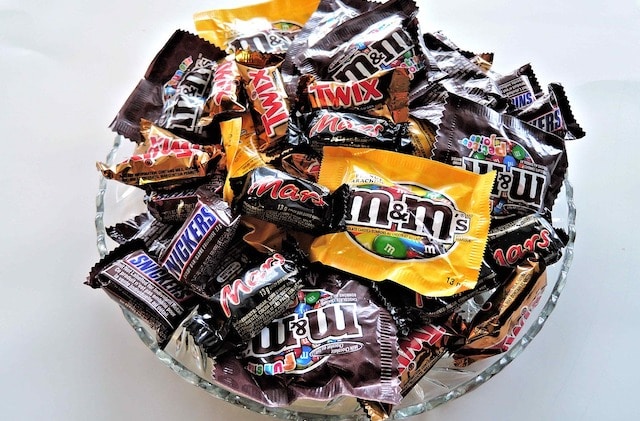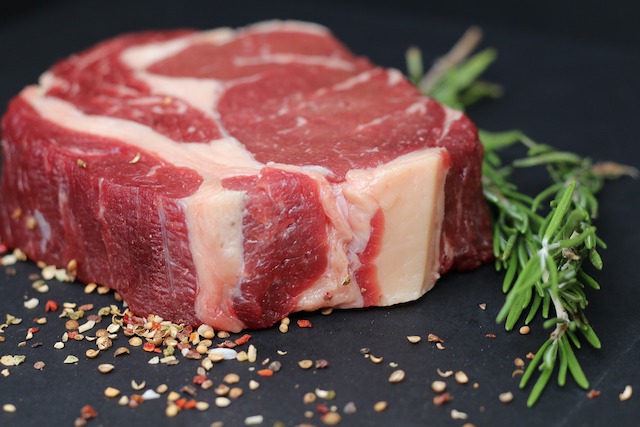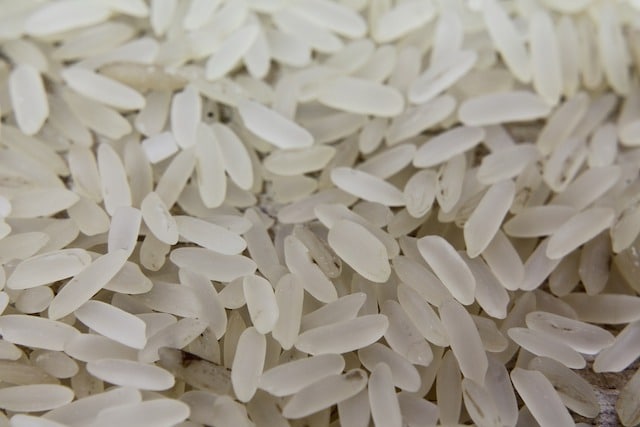10 Must-Know Calorie Facts to Help You Make Smarter Food Choices
Are You What You Eat? Here’s Why Your Daily Diet Might Be More Mind-Blowing Than You Think
Do you scrutinize every bite you take, counting calories like a human calculator? Or are you the type to just grab what’s nearby, eat until you’re full, and call it a day? Either way, the science behind our daily diet is more fascinating than most people realize.
Sure, studies show that many of us—especially in the Western world—tend to eat more than we need. But beyond that, there’s a whole world of curious, quirky, and even unbelievable facts about how the human body processes food. From the strange truths behind metabolism to the surprising effects of certain nutrients, eating isn’t just about survival—it’s an ongoing experiment happening inside you every day.
10. Bahrain Tops the Global Calorie Charts—And It’s Not Even Close

When you think of the country that eats the most calories per person, your brain probably jumps straight to the United States, right? It’s the usual suspect in conversations about overindulgence and junk food. But the reality is far more surprising—and kind of mind-blowing.
In 2023, the tiny island nation of Bahrain grabbed the top spot for calorie consumption, averaging a whopping 4,012 calories per person per day, according to research from Our World in Data, affiliated with Oxford University. That’s nearly double the old-school nutritional guideline of 2,000 calories per day.
Yes, the U.S. still packs a punch at 3,868 calories, and Ireland isn’t far behind with 3,850. But Bahrain took the gold—despite not being the first country that comes to mind in conversations about heavy eating.
What’s wild is how far you have to scroll down the global rankings to find a country that actually sticks to the 2,000-calorie mark. And that makes you wonder—are we eating because we need to, or because we can?
9. Dwight Howard’s Astonishing Candy Consumption

If you’re a basketball enthusiast, there’s a good chance you’re familiar with Dwight Howard. He’s not just an ordinary player; he’s an NBA all-star and a champion. For nearly a decade, he graced the courts of the NBA, and even today, he’s still actively involved in the sport, albeit competing overseas.
When you think of a top-tier, elite athlete like Howard, you’d naturally assume that he adhered to strict dietary restrictions to maintain his impressive physique. After all, the demands of professional sports are immense, and nutrition plays a crucial role in an athlete’s performance and overall well-being. However, as it turns out, appearances can be deceiving.
In 2013, Howard found himself at the center of a rather surprising controversy. He was accused of having a serious candy addiction. Now, it’s common knowledge that athletes require a high-calorie diet to fuel their bodies and meet the physical demands of their jobs. But Howard took it to a whole new level.
To put things into perspective, he was consuming the equivalent of 24 chocolate bars worth of sugar every single day. That’s right – a staggering 5,000 calories worth of candy on a daily basis, and this was during the peak of his professional sports career. It’s mind-boggling to think about the amount of sugar and empty calories he was ingesting regularly.
What’s even more astonishing is that this wasn’t a short-term indulgence. Howard had been following this candy-laden diet for an entire decade. It wasn’t until he started experiencing tingling sensations in his fingers and toes that he finally sought medical help. This unusual behavior and its consequences serve as a reminder that even the most seemingly disciplined athletes can have their share of secrets and struggles.
8. Some Strongmen Eat 20,000 Calories a Day—And That’s Just Training

Forget your fitness app’s recommended daily intake—strongmen laugh in the face of 2,000 calories. These modern-day titans eat like a small army just to keep their engines running. For top competitors, 20,000 calories per day isn’t excess—it’s survival.
Take Robert Oberst, a 6’8”, 400-pound strongman legend. His daily training diet includes six full meals, beginning with up to 10 eggs for breakfast. By the end of the day, he’s eaten over 3.5 pounds of meat, six cups of rice, and enough protein to build a second Robert Oberst.
He’s not the only one with superhero-level eating habits. Hafthor Bjornsson, the real-life giant who played The Mountain on Game of Thrones, downs 10,000 calories daily, with his breakfast alone including a half-dozen eggs and dozens of strips of bacon. And then there’s Tom Stoltman, the World’s Strongest Man, whose 13,000-calorie diet fuels workouts most of us can’t even imagine.
Is it healthy? Not in a conventional sense. But if your job involves pulling planes or lifting boulders, this is the fuel it takes.
7. Medieval Peasants Ate Nearly 3,000 Calories a Day—And Sometimes Way More

Think medieval peasants were scrawny, starving, and surviving on scraps? Think again. The truth is far more surprising—and a lot more filling.
Historical records suggest that the average medieval peasant consumed around 2,900 calories per day, with some estimates placing the number as high as 6,000 to 9,000 calories. Why so much? Because daily life was physically demanding, especially for those toiling in fields from sunrise to sunset. That kind of work burns calories fast.
Even nobles and monks weren’t skipping meals. While they weren’t laboring as hard, they often enjoyed 4,000 to 6,000 calorie diets, thanks to access to richer, more diverse foods.
Of course, this doesn’t mean they were dining on gourmet meals. Peasant diets were simple and repetitive, usually based around grains, root vegetables, beans, and whatever local produce was available. But despite the monotony, they had quantity—and calories—to fuel their lives.
6. The Surprising Calorie Difference: Cooked vs. Uncooked Food

Have you ever stopped to think about which has more calories, a cooked carrot or a raw one? At first glance, it might seem like they’d be the same, especially if they weigh the same and you haven’t added anything during cooking. You might even assume that the cooked carrot would have fewer calories, thinking it probably shrank and lost some water during the cooking process. But here’s where things get interesting – technically, the cooked carrot actually has more calories.
In a fascinating experiment, researchers decided to explore this concept further. They fed mice two different diets. One group of mice was given cooked meat and vegetables, while the other group received raw meat and vegetables in the exact same proportions. The results were quite surprising – the mice that ate the cooked food ended up getting more energy from their meals than the mice on the raw food diet. And more energy means more calories.
But how does this happen? Well, there’s an often-overlooked factor when it comes to determining calorie counts – the amount of effort our bodies put into digesting the food to extract those calories. If you follow a completely raw diet, your stomach and other organs have to work a bit harder to break down the food and release the nutrients. It’s like having to do more manual labor to get the same result.
On the other hand, when food is cooked, it’s as if we’ve already done a lot of the groundwork for our bodies. Cooking breaks down some of the tough fibers and makes the nutrients more accessible. This means it’s easier for us to extract the calories from the food. As a result, technically, we get more energy because we’re expending less effort during digestion.
Cooking has been proven to increase the net energy gain from all kinds of foods. Whether it’s starches, proteins, or lipid-rich foods, you’ll generally get more calories if the food is cooked. So, the next time you’re thinking about your diet, it’s worth considering the impact of cooking on the calorie content of your food.
5. You Swallow Around 200 Calories of Your Own Mucus Every Day

It might sound gross, but your body has a recycling habit you probably never think about—and it involves mucus.
On average, you produce about 1.5 quarts (1.4 liters) of mucus daily. That’s roughly six cups, most of which you end up swallowing without even realizing it. Every time you clear your throat or just casually swallow, a little bit of that mucus slides down into your stomach.
Now here’s the surprising part: All that mucus adds up to about 200 calories per day. Technically, you’re just reabsorbing calories your body already made, so it’s not like you’re gaining extra weight from it. But if you were somehow able to spit all of it out instead, you’d technically lose those calories.
It’s weird, sure—but mucus plays an important role in keeping your body hydrated and trapping bacteria before they get deeper into your system. So while it might sound unpleasant, it’s actually a key part of your health.
4. The Dominance of Rice, Corn, and Wheat in Global Calorie Consumption

You might have come across people on the internet who are convinced that McDonald’s is the main source of calories for most people worldwide. But if you really look into it, that claim just doesn’t hold up.
Think about the vast array of food options available to us. There are literally thousands of different things we could eat in a single day. We have hundreds of species of fish and seafood to choose from, not to mention the thousands of different fruits, vegetables, and fungi. It’s a culinary wonderland out there!
However, when it comes down to it, there are a select few foods that contribute a huge chunk of the calories in the human diet. Take rice, for example. It’s a staple food that’s enjoyed across the globe. In fact, rice accounts for over 20% of all the calories that human beings consume. That’s a significant portion!
And then there’s corn. Corn is another major player in our diets. It accounts for nearly 20% of all the calories we consume. It’s used in so many different ways – from being a key ingredient in many processed foods to being a staple in some traditional cuisines.
Now, let’s add wheat into the mix. When you combine the calorie contributions of rice, corn, and wheat, these three staple plants alone make up over 50% of all the calories consumed in the world. That’s right – just three different plants! It’s truly remarkable to think that such a small number of crops provide half of the calories eaten by mankind. This shows just how important these staple crops are in our global food system.
3. A Blue Whale Burns 2,000 Calories Just to Open Its Mouth—Then Eats 500,000 in One Bite

Humans might worry about eating 2,000 calories in a day, but for a blue whale, that’s just the cost of doing business—literally the energy it takes just to open its mouth.
Blue whales, the largest animals on Earth, feed primarily on tiny creatures called krill. When they lunge through a dense swarm of krill with their massive mouths open, the energy required to make that move can cost them about 2,000 calories.
But here’s the mind-blowing part: that one bite pays off big time. The average mouthful nets the whale around 500,000 calories—and they do this many times a day. In total, a single blue whale can consume between 20 million to 50 million calories daily.
To put that into human terms, if a Big Mac contains 590 calories, a blue whale’s diet is the equivalent of eating over 84,000 Big Macs per day.
2. The Average Human Body Contains Over 125,000 Calories

Let’s start with the obvious: no one’s suggesting you eat another person—but from a purely scientific and survival-based perspective, it’s fascinating (and a bit disturbing) to consider just how many calories are in the average human body.
According to research dating back to the 1950s that analyzed the nutritional breakdown of four corpses (yes, really), a typical adult human contains roughly 125,000 calories. That’s enough to sustain someone for several days—or even weeks—in an extreme survival scenario.
Where do all those calories come from?
- Thighs are the biggest prize, with about 13,000 calories.
- Upper arms bring in just under 7,500 calories.
- The brain clocks in around 2,700 calories, while
- The heart delivers about 650 calories.
Of course, these are averages, and a more muscular individual (say, a bodybuilder) would have even more nutritional value.
1. The Astonishing Alcohol Consumption of Andre the Giant

We’ve all come across some pretty mind-boggling calorie numbers before, whether it’s in relation to massive meals or extreme diets. And we’ve even delved into some smaller-scale calorie details. But now, let’s turn our attention to one of the most remarkable individuals to ever grace this planet – Andre the Giant.
Born as Andre Rousimoff, Andre was not just an actor and a wrestler; he was an all-around larger-than-life figure. Standing at over seven feet tall and weighing more than 500 pounds, his colossal size made him a household name. However, this extraordinary growth came at a cost. The condition responsible for his immense stature also caused him a great deal of pain.
To cope with this chronic pain, Andre turned to alcohol. He has been dubbed the greatest drunk of all time, and the stories about his drinking exploits are legendary. Fellow wrestlers and actors alike have shared tales of Andre’s incredible alcohol consumption.
It’s said that Andre could consume up to 7,000 calories worth of alcohol in a single sitting. And remember, this is just the alcohol calories! The man likely had a few meals throughout the day and might have had other drinks before heading to the bar where he would down that much booze.
For Andre, this wasn’t a rare occasion or a one-time binge. It was his daily alcohol intake. He was known for having cases of wine brought backstage at wrestling events, and he would drink every last drop before stepping into the ring for his matches.
Some of the stories are truly astonishing. There are accounts of him drinking 119 beers in one go. That’s an incredible amount! To put it into perspective, 119 cans of beer equal about 41.6 liters of liquid. Since one liter of liquid weighs approximately one kilogram, if we don’t consider any pee breaks (which is a big assumption!), Andre would have gained almost 92 pounds just from drinking that much beer in a single sitting. And then there’s the story of him drinking 12 bottles of wine on a bus during road trips.
Andre the Giant’s alcohol consumption is a testament to his larger-than-life persona and the struggles he faced due to his unique physical condition. It’s a story that continues to fascinate and shock people to this day.

























